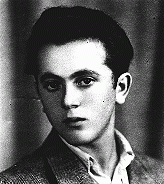You searched for: 谷歌网页优化规则【TG飞机:@bapingseo】代google优化竞价投放包上【TG电报:@bapingseo】随州谷歌seo公司【Telegram:@bapingseo】彩神争8最新邀请码注册富贵棋牌网址多少谁知道九州体育直播的下载网址链接是多少?9SsHfp/163987.html
<< Previous | Displaying results 351-400 of 485 for "谷歌网页优化规则【TG飞机:@bapingseo】代google优化竞价投放包上【TG电报:@bapingseo】随州谷歌seo公司【Telegram:@bapingseo】彩神争8最新邀请码注册富贵棋牌网址多少谁知道九州体育直播的下载网址链接是多少?9SsHfp/163987.html" | Next >>
-
Maria Terez Halpert Katz
ID CardAlso known by her Yiddish name, Tobe, Terez was raised in a religious Jewish family. Her father and two brothers were rabbis. Though Terez was a promising student, she didn't pursue an advanced education because her traditional family wanted her to marry. So Terez married Menyhert Katz and moved to the town of Kisvarda [in Hungary]. There, she raised five daughters and one son; two other sons died. 1933-39: Terez's twin sons died when they were 8 months old, and she was convinced that their death was a…

-
Pearl Harbor
ArticleJapan’s aerial attack on Pearl Harbor changed many Americans' attitudes toward involvement in WWII. Learn more about the events, facts, and background info.

-
Wolf Himmelfarb
ID CardWolf was the eldest of three children born to Yiddish-speaking, religious Jewish parents in Koprzewnica, a small town in southern Poland. His father ran a grocery store, where his mother would help out on Thursdays. The store was located in the house of Wolf's grandmother, and Wolf, his brother, Izik, and sister, Chana, would play in a large yard in the back. 1933-39: Wolf started attending school a year late, at 8, so that he and his younger brother could share the same books. In the third grade, Jewish…
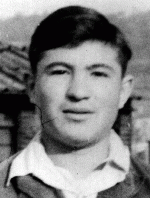
-
Moses Rechnitz
ID CardThe younger of two children, Moses was born to Jewish parents living in the southwestern Polish town of Bedzin. When he was 7, his family moved to the nearby city of Katowice where his father had a wholesale leather business. The Rechnitzes lived in a three-bedroom, upper-floor apartment on Jordana Street. Moses attended a Polish elementary school and also received religious instruction. 1933-39: In secondary school, Moses was one of the only Jewish pupils. He first encountered antisemitism when a teacher…
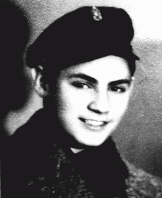
-
Bernard Krakauer
ID CardBernard was one of seven children born to a German-speaking, Jewish family in the small Moravian town of Mikulov in the central part of Czechoslovakia. The family later moved to the town of Hodonin where Bernard opened a dry-goods and clothing store. In 1899 he married Berta Koselova, and the couple had six children. During World War I Bernard served in the Austro-Hungarian army. 1933-39: In 1938 Bernard retired, and since none of his sons wanted to take over the business, Bernard sold it. He, his wife,…
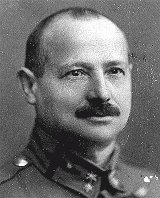
-
Berta Koselova Krakauerova
ID CardBerta was born to a Jewish family. Orphaned when she was a child, she was raised by her Uncle Poldi in Vienna. In 1899 she married Bernard Krakauer, a Jewish businessman from her hometown of Mikulov. As was the custom for orphans, Berta wore a black dress at her wedding. The couple settled in the town of Hodonin, where Bernard opened a dry goods and clothing store. They raised six children. 1933-39: With their children grown, Berta's husband retired in 1938. He sold the business and moved with Berta and…

-
Taube Fishman Rosenblat
ID CardTaube, also known as Tola, was born to a Yiddish-speaking Jewish family. Her father worked as a tailor, and a wealthy uncle in Germany helped to support the large family. After finishing public school, Taube trained to be an embroiderer. She fell in love with Itzik Rosenblat, a young man who had first apprenticed with her father in 1925 when Taube was 8 years old. 1933-39: In 1938, after a 13-year courtship much opposed by her family, Taube married Itzik without getting her dowry. The couple lived in an…

-
Odon Jerzy Wos
ID CardOdon was the third of four children born to Roman Catholic parents in Warsaw, Poland's capital. His father had worked for the Polish merchant marine before starting his own textile business in 1930. When Odon was 8, the family moved to a comfortable apartment located near the Royal Castle and Vistula River. In 1932 Odon began attending grade school. 1933-39: In September 1938 Odon began secondary school. Sensing growing danger from Germany, his father advised him to study German in addition to French. On…

-
Atrocities against Burma's Rohingya Population
ArticleThe Burmese military has targeted the Rohingya people because of their ethnic and religious identity. The military’s actions constitute genocide and crimes against humanity. Learn more

-
Mass Shootings at Babyn Yar (Babi Yar)
ArticleAt Babyn Yar in late September 1941, SS and German police units and their auxiliaries perpetrated one of the largest massacres of World War II.

-
Leopold Page describes meeting German industrialist Oskar Schindler
Oral HistoryLeopold was a teacher in Krakow, Poland, when World War II began in 1939. While serving in the Polish army, he was captured by Germans. Leopold escaped from a prisoner-of-war transport. Soon after, he met the German industrialist Oskar Schindler. The two became friends. Leopold was forced to live in the Krakow ghetto. He later worked in Schindler's factory in Bruennlitz. He and the other Jews who worked there were treated relatively well and protected from the Nazis. After the war, Leopold moved to the…

-
The Treatment of Soviet POWs: Starvation, Disease, and Shootings, June 1941–January 1942
ArticleThe Nazi treatment of Soviet prisoners of war (POWs) was determined by Nazi ideology. Cruel conditions included starvation, no medical care, and death.
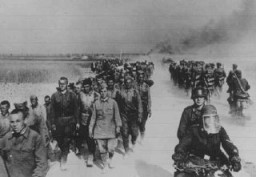
-
SS and the Holocaust
ArticleLearn more about the SS and the organization’s involvement in perpetrating the Holocaust.
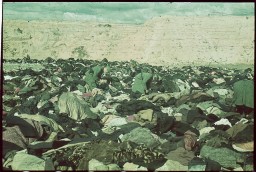
-
Leni Riefenstahl
ArticleLeni Riefenstahl was a German dancer, actress, and film director best known for her imposing propaganda films in support of the National Socialist (Nazi) Party.
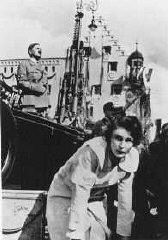
-
Le Chambon-sur-Lignon
ArticleFrom 1940 to 1944, Le Chambon-sur-Lignon and neighboring villages provided shelter to some 5,000 people, among them Jews fleeing persecution.

-
Kovno
ArticleKovno had a rich and varied Jewish culture. Learn about the Soviet and German occupations of Kovno, ghettoization, secret archives, and resistance in Kovno during WWII and the Holocaust.

-
Ravensbrück
ArticleLearn about conditions and the treatment of prisoners in Ravensbrück, the largest concentration camp for women in the German Reich.

-
Ardeatine Caves Massacre
ArticleNow a national memorial site, the Ardeatine Caves outside Rome were the site of a German reprisal for a bombing by Italian resistance operatives in March 1944.
-
Book Burning
ArticleBook burning is the ritual destruction by fire of books or other written materials. The Nazi burning of books in May 1933 is perhaps the most famous in history. Learn more.

-
Auschwitz Camp Complex
ArticleAuschwitz was the largest camp established by the Germans. It was a complex of camps, including a concentration camp, killing center, and forced-labor camp.

-
The Nazi Olympics Berlin 1936: African American Voices and "Jim Crow" America
ArticleAfrican American athletes, facing racism at home, also debated whether to join or boycott the 1936 Olympic games in Germany, then under a racist dictatorship. Learn more.
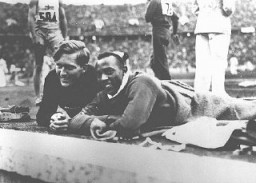
-
How Were the Crimes Defined?
ArticleToday, a body of international criminal law exists to prosecute perpetrators of mass atrocities. Learn about principles and precedents from the Nuremberg Charter and the IMT.
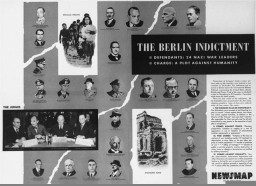
-
Sobibor: Key Dates
ArticleExplore a timeline of key events in the history of the Sobibor killing center in the General Government, the German-administered territory of occupied Poland.

-
Klaus Barbie: The Butcher of Lyon
ArticleKlaus Barbie, chief of the Gestapo in Lyon, France, was nicknamed the "Butcher of Lyon" for his brutal actions towards Jews and members of the French Resistance.
-
Rudolf (Rezső) Kasztner
ArticleLearn more about Rudolf (Rezső) Kasztner (1906-1957) during World War II and his controversial efforts to help refugees escape Hungary in 1944.

-
The Vélodrome d'Hiver (Vél d'Hiv) Roundup
ArticleThe Vélodrome d'Hiver (or Vél d'Hiv) roundup was the largest French deportation of Jews during the Holocaust. It took place in Paris on July 16–17, 1942.
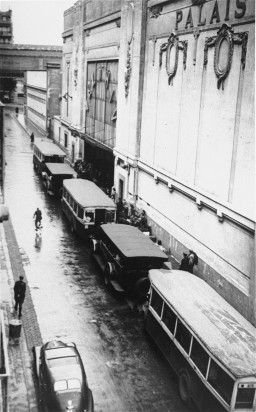
-
Grafeneck T4 Facility
ArticleThe Grafeneck T4 Center was the first centralized killing center to be established by German authorities within the context of the Nazi “euthanasia,” or T4, program.
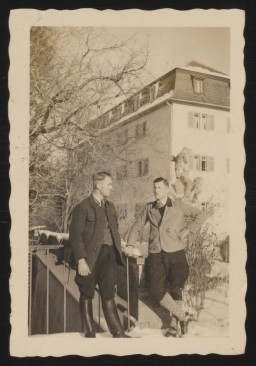
-
Warsaw Ghetto Uprising
ArticleThe Warsaw ghetto uprising was the largest, symbolically most important Jewish uprising, and first urban uprising in German-occupied Europe.
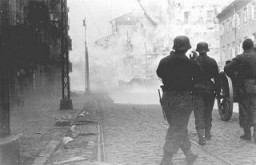
-
An Overview of the Holocaust: Topics to Teach
ArticleRecommended resources, topics, context, rationale, and critical thinking questions if you have limited time to teach about the Holocaust.

-
Warsaw
ArticleIn October 1940, Nazi authorities established the Warsaw ghetto. Learn more about life in the ghetto, deportations, armed resistance, and liberation.

-
Mittelbau Main Camp: In Depth
ArticleLearn about conditions and forced labor in Dora-Mittelbau, the center of an extensive network of forced-labor camps for the production of V-2 missiles and other weapons.

-
Inge Berg
ID CardInge lived with her parents, grandparents, uncle, and younger sister, Gisella, in Lechenich, a small village outside Cologne. The Bergs were an observant Jewish family. Inge's grandfather was the president of the local synagogue association and her uncle was the cantor. Her father, Josef was a respected cattle dealer, who had many business and personal contacts with their Jewish and non-Jewish neighbors. 1933–39: In 1935, two years after the Nazis came to power, Inge was forced to leave public school in…
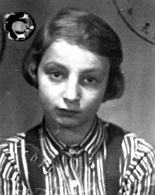
-
Hinda Chilewicz
ID CardHinda was the eldest of three children in a comfortable middle class Jewish family. Her father owned a textile business in Sosnowiec and her mother attended to the home. Sosnowiec in southwestern Poland had a growing Jewish community of almost 30,000 people. There was a Jewish hospital as well as religious schools. 1933–39: Hinda was just 13 years old when German troops invaded Poland on September 1, 1939. Three days later, they occupied Sosnowiec and terrorized the Jewish community, killing over a…

-
Gisella Renate Berg
ID CardGisella lived with her parents, grandparents, uncle, and older sister, Inge, in Lechenich, a small village outside of Cologne. The Bergs were an observant Jewish family. Gisella's grandfather was the president of the local synagogue association and her uncle was the cantor. Her father, Josef was a respected cattle dealer, who had many business and personal contacts with their Jewish and non-Jewish neighbors. 1933–39: Gisella was born several months after the Nazis came to power. Her parents feared for…
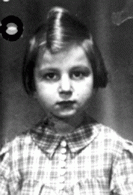
-
Susi Hilsenrath
ID CardThe Hilsenraths lived in Bad Kreuznach, a city in western Germany with a Jewish community that dated back to the 13th century. Susi was the eldest of three children. Her father owned a thriving linen store, and her mother took care of Susi and her two brothers. 1933–39: After the Nazis came to power, the Hilsenraths, like other Jewish families, began to feel the effects of increased antisemitism. Susi was forced to leave the public school, along with the other Jewish children. Even walking on the…
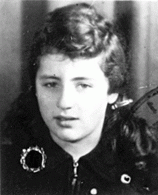
-
Cecilie Klein-Pollack
ID CardCecilie was the youngest of six children born to a religious Jewish family in the Czechoslovakian town of Yasinya. Her father, who was from Poland, taught private lessons in math and German. The family owned a small grocery store, which Cecilie's mother managed. 1933-39: Cecilie's father died in 1934 when she was 9. In March 1939 Hungary, which was sympathetic to Nazi Germany, annexed the area of Czechoslovakia where they lived. One day, Cecilie arrived home to find her mother and sister had been arrested…
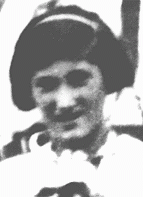
-
Isak Saleschutz
ID CardIsak was one of seven children born to devout Hasidic Jewish parents living in Dubas. By 1900, all of his siblings had immigrated to America; Isak remained in Poland due to his strong religious convictions. Through an arranged marriage, he was wed to Ester Berl when he was 18. They settled in Kolbuszowa, a small town near Dubas, where Isak ran a successful wholesale general store. 1933-39: On September 9, 1939, the German army occupied Dubas. They hanged two Jews to demonstrate the consequences of not…
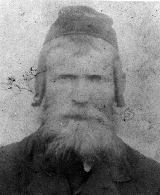
-
Urszula Kaczmarek
ID CardUrszula was one of four children born to Franciszek and Jadwiga Kaczmarek, who lived in the industrial city of Poznan in western Poland. The family lived at 11 Smolnej Street. Like their parents, the Kaczmarek children were baptized in the Roman Catholic faith. 1933-39: As one of the older children in the family, Urszula helped her mother with the housework. She was 10 years old when the Germans invaded Poland on Friday, September 1, 1939. German planes bombed Poznan that same day, and German troops…
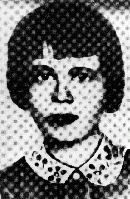
-
Joseph von Hoppen Waldhorn
ID CardJoseph was the youngest of three children born to immigrant Jewish parents. His Polish-born father was a former officer in the Austro-Hungarian army who had met and married Joseph's Hungarian-born mother during World War I. Joseph was raised in a religious household and grew up speaking French. 1933-39: Joseph's mother says it's better here in Paris than in the poor village where she grew up. Unlike his mother, who speaks broken French, Joseph and his older sisters have grown up speaking French fluently.…

-
Paula Wajcman
ID CardPaula was raised in a religious Jewish family in Kielce, a city in the southeast of Poland. Her family lived in a modern two-story apartment complex. Paula's father owned the only trucking company in the district. Her older brother, Herman, attended religious school, while Paula attended public kindergarten in the morning and religious school in the afternoon. 1933-39: Paula's school uniform was a navy blazer with a white blouse and pleated skirt. At age 9, she did the "Krakowiak" dance at school. Boys…

-
Abraham Wijnberg
ID CardAbraham, or "Braham" as he was nicknamed, was the oldest of four children. When Braham was 14, his Jewish parents moved to the town of Zwolle, where they built a kosher hotel. Braham attended Dutch public schools. Monday through Thursday afternoons he also went to religious school where he learned Hebrew, Jewish history and the Bible. 1933-39: Abraham felt that it was a shame that he had to forfeit a scholarship to college in Groningen, but he had to stay in Zwolle to help his parents with the hotel.…
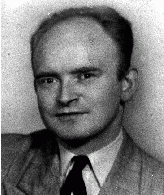
-
Feige Schwarzfink
ID CardFeige was born to a religious Jewish family in the small village of Szydlowiec [in Poland]. She lived with her parents, six brothers and sisters, and elderly grandparents in a small house which, like many homes in the village, had no running water, indoor plumbing, or electricity. Feige's father was a shoemaker. 1933-39: In the afternoons after public school Feige studied at a Jewish religious school. Although her parents didn't know it, she attended meetings of the Bund, the Jewish Socialist party. Feige…

-
Aron Tabrys
ID CardAron was the second of six children born to Jewish parents in Vilna, a city known as a center of Jewish cultural life. He was called Arke by his friends and family. Aron's father supported his large family on the meager income of a chimney sweep. 1933-39: As a child Aron attended a Jewish day school, and then went on to attend a public secondary school. When he was 14 his father had an accident which rendered him blind, and Aron had to start working full-time to support the family. Aron belonged to an…

-
Norbert Yasharoff
ID CardNorbert was born to a Jewish family in the Bulgarian capital of Sofia. His father, a prominent lawyer, was also active in the Jewish community, heading relief efforts for the city's Jewish orphans. Sofia was home to approximately half of Bulgaria's estimated 50,000 Jews during the mid-1930s. 1933-39: On September 1, 1939, while on a family vacation the Yasharoffs heard over the radio that war [World War II] had begun. Norbert's parents exchanged worried glances; what would happen to them now? Bulgaria had…
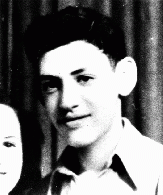
-
Edith Fuhrmann Brandmann
ID CardEdith's village of Kriesciatik was located on the border between Romania and Poland. Her Jewish parents owned a large ranch where they raised cattle and grew sugar beets. They also owned a grocery store. Edith had a brother, Jacob, and a sister, Martha. At home the family spoke Yiddish and German, and Edith learned Romanian after she began school. 1933-39: Edith's village was by a river, and she spent summer days by the water with her friends, swimming and playing. Her mother would pack her bread and…

-
Gertruda Nowak
ID CardGertruda was one of five children born to a poor family in the rural community of Zegrowek in western Poland. The Nowaks lived near Gertruda's grandparents. Like their parents, Sylwester and Joanna Nowak, the Nowak children were baptized in the Roman Catholic faith. 1933-39: As a young girl, Gertruda helped with chores around the house, and after school she looked after her younger brothers and sisters. She was 9 years old when the Germans invaded Poland on September 1, 1939. Nazi troops reached Zegrowek…
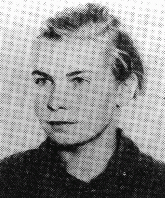
-
Elsa (Eliska) Skutezka Kulkova
ID CardElsa was the eldest of three children born to Jewish parents in Brno, the capital of Moravia, where her father ran a successful shipping company. In 1920 she graduated from a German-language secondary school. She married and moved to Bratislava, but the marriage was unsuccessful and Elsa returned to Brno in 1926, where she opened a millinery business. 1933-39: On May 24, 1933, Elsa married Robert Kulka and the couple settled in Robert's hometown of Olomouc. Their son, Tomas, was born a year and a day…
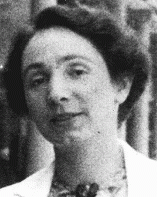
-
Helene Herta Katz Wohlfarth
ID CardHelene, called Herta, was born to a Russian-Jewish father and a German-Jewish mother in a town on the Main River, near Frankfurt. Her father had immigrated to Germany from Russia in 1890. Her mother had automatically taken on her husband's Russian citizenship when she married. In 1914 Russia and Germany went to war, and Russians living in Germany were considered "enemy aliens." 1933-39: Herta married Siegfried Wohlfarth in 1933 and could change from being "stateless" to taking on his German citizenship.…
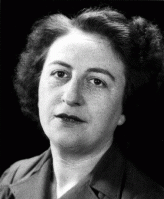
-
Ethel Stern
ID CardEthel was born to a Jewish family living in Warsaw. When she was 9, her family moved to the town of Mogielnica, about 40 miles southwest of Warsaw. Ethel's father spent much of his time studying religious texts. His wife managed the family liquor store. Ethel attended public school during the day and was tutored in religious studies in the evening. 1933-39: Ethel had always wanted to be a teacher. At age 14, after attending religious school in Lodz, she began to teach in the town of Kalisz, where her…
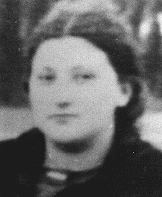
-
Yosel Coller
ID CardOne of six children, Yosel was raised in a religious Jewish family in Lodz, an industrial city in western Poland. His father was a businessman. At the age of 6, Yosel began attending a Jewish day school. His two older sisters attended public school in the morning and religious school in the afternoon. Yosel spent much of his free time playing soccer with his brothers. 1933-39: Yosel's family lived in a modest house in the northern section of Lodz. He went to a Jewish day school and had many friends there.…
